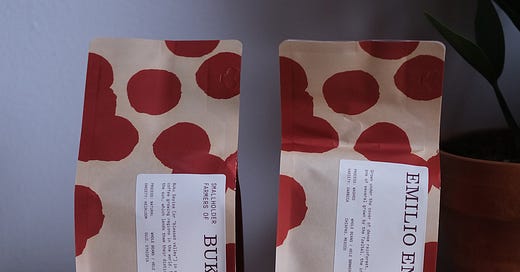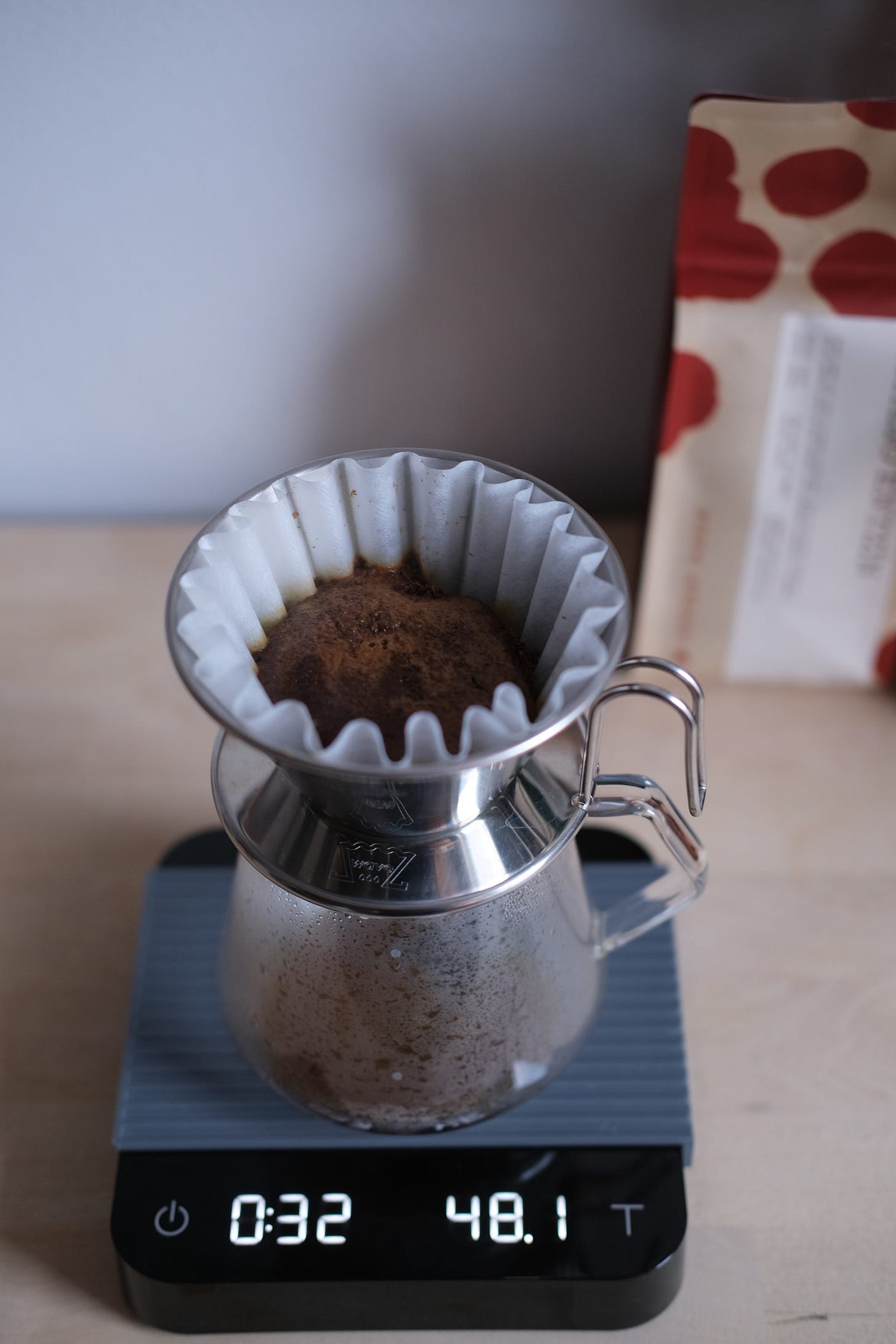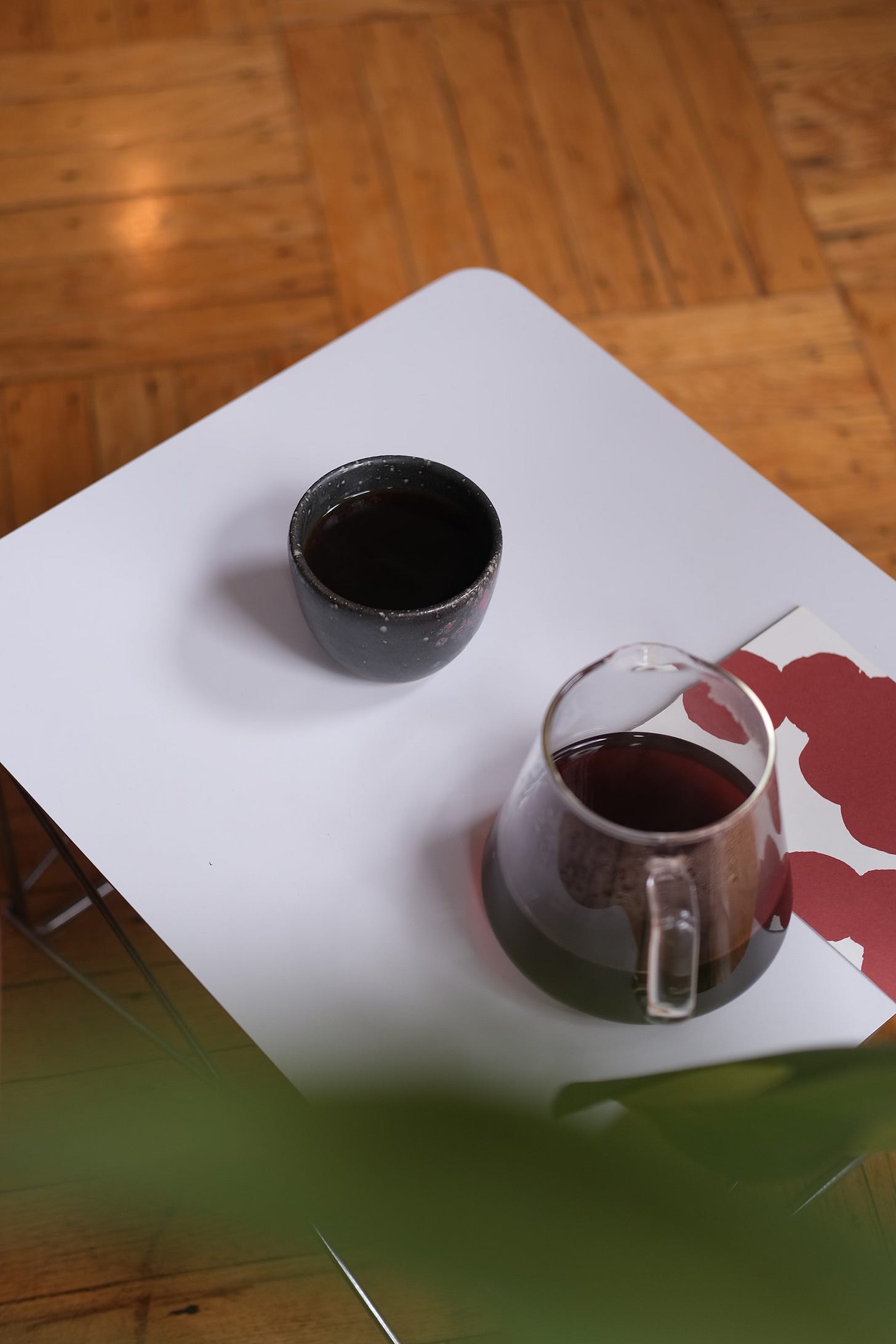I’m guilty of following the hype around Noma’s new coffee subscription program—the restaurant in Copenhagen known for being one of the most influential restaurants in the world. I was curious how it could be different from anything I’d had before, and I wanted to see what they would select, given their reputation.
The experience
The experience included a lot of information about their coffee team, along with a deep dive into brewing methods like their V60 technique and the Nomacano. The latter is a process Noma specifically developed to serve a rich, full-bodied espresso and pour-over hybrid. More about my experience with the Nomacano in a later post.
I went through multiple stages once I received the coffee—excitement about the packaging and design, curiosity about the taste, and finally, drinking a selected cup, which, by Noma’s standards, was expected to involve a lot of research and experimentation. I was also simply interested in learning something new about coffee processing and how it might influence the taste.
What’s in the box
You are getting 2 different bags of coffee beans, each 250g.
EMILIO ENTZÍN
Process: WASHED
Variety: GARNICA
From: CHIAPAS, MEXICO
Taste: Floral bright
BUKU SAYISA
Process: Natural
Variety: Heirloom
From: Ethiopia
Taste: Fruity, rich
The method
Kalita, Pour over.
The taste
EMILIO ENTZÍN – Mexico
Very strong acidity, light, and tea-like.
Citrusy. The acidity was overwhelming, making it difficult to identify much else.
BUKU SAYISA - Ethiopia
Chocolatey with a slightly fermented taste.
Fruity and much richer than the first one.
In short, I liked the coffees—they were unique and definitely stood out from the ordinary. The Ethiopian coffee, in particular, was really nice, with its chocolatey, fruity flavor and slight fermentation. The Mexican coffee had a bold, acidic start but didn’t quite offer the complexity I was hoping for.
Would I buy it again?
It was fun to explore some fresh coffee. I became interested in trying more naturally processed coffee, as its distinct fruity flavor adds a lot of character. Would I keep the subscription to Noma? Not really, since there are many good options around—I don’t need to go through their sourcing process when local coffee shops offer a similar variety.
Overall, the price of the coffee plus shipping was a bit steep compared to the value received. But it made for great coffee tastings and gatherings. And lastly, seeing what’s happening in coffee and knowing what Noma is roasting right now made it all worthwhile.





